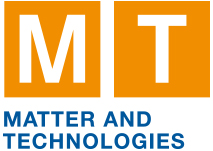Speaker
Description
Operating high-gain FELs with ultra-low bunch charges around 1pC or even less enables the generation of ultra-short, coherent pulses with significantly higher brightness, opening the path to explore processes at attosecond timescales [1,2]. Similar requirements exist for next-generation ultrafast electron diffraction (UED), which demands sub-pC bunches and arrival-time monitoring with single-digit femtosecond precision.
Bunch arrival-time monitors (BAMs) based on electro-optical (EO) methods are already established at facilities such as FLASH, EuXFEL,ELBE, SwissFEL, and others [3-5]. They provide quasi non-invasive measurements relative to a sub-fs synchronized laser pulse, reaching 3.5 fs resolution for 250 pC bunches at EuXFEL [6]. However, adapting
these systems for low-charge operation is necessary, since sensitivity strongly depends on bunch charge [7].
A previous project (05K19RO1) developed new broadband pickup structures exceeding 100 GHz bandwidth, showing promising results [8,9]. These concepts were further validated as a demonstrator at ELBE [10,11]. The proposed work aims to realize Mach-Zehnder-type EOMs and pickup structures with integrated networks to achieve sub-10 fs resolution for sub 1 pC bunches. Prototypes will be tested at facilities such as REGAE (DESY), FLUTE (KIT), ELBE (HZDR) to enable applications at EuXFEL, FLASH, and future FEL facilities.
References
[1] S. Reiche et al., DOI:10.1016/j.nima.2008.02.064
[2] J. B. Rosenzweig et al., 10.1016/j.nima.2008.04.083
[3] F. Löhl et al., DOI: 10.1103/PhysRevLett.104.144801
[4] S. Schulz et al., ISBN 978-3-95450-127-4
[5] S. Schulz et al., 10.18429/JACoW-FEL2019-WEB04
[6] M. K. Czwalinna et al., DOI: 10.18429/JACoW-?IPAC2021- THXB02
[7] A. Angelovski et al., Proc. IPAC’11, Paper: TUPC076
[8] A. Penirschke et al., DOI: 10.18429/JACoW-IBIC2019-WEPP019

